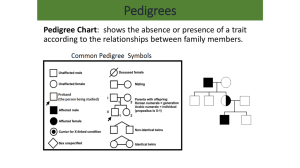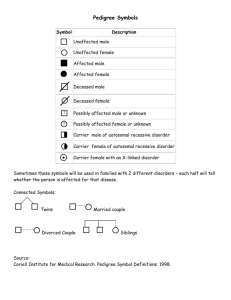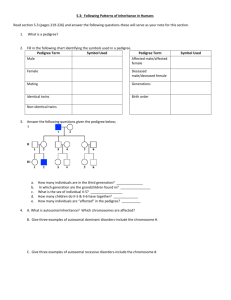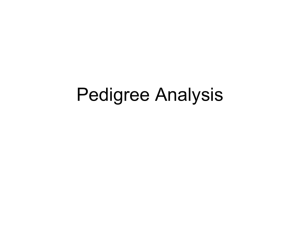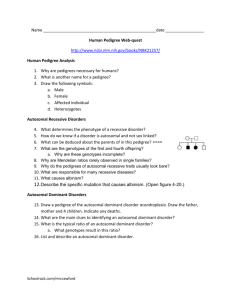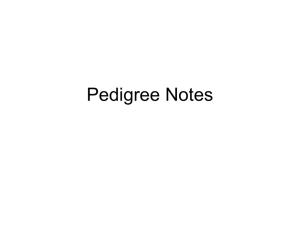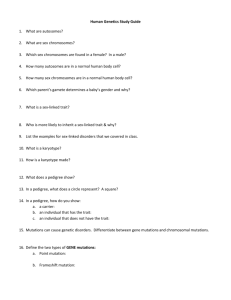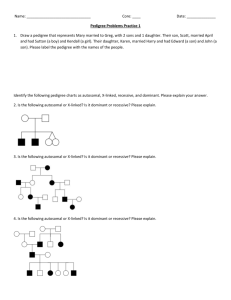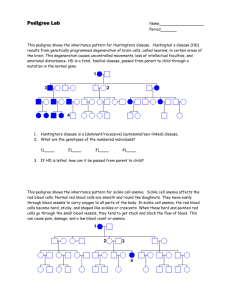Human pedigrees
advertisement
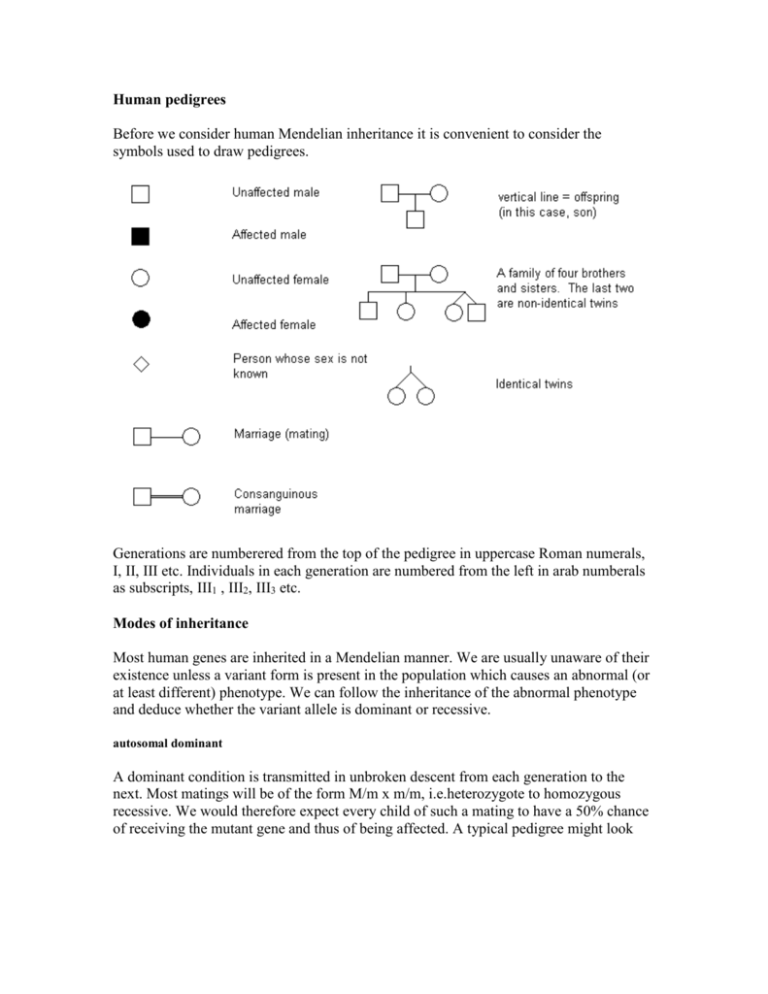
Human pedigrees Before we consider human Mendelian inheritance it is convenient to consider the symbols used to draw pedigrees. Generations are numberered from the top of the pedigree in uppercase Roman numerals, I, II, III etc. Individuals in each generation are numbered from the left in arab numberals as subscripts, III1 , III2, III3 etc. Modes of inheritance Most human genes are inherited in a Mendelian manner. We are usually unaware of their existence unless a variant form is present in the population which causes an abnormal (or at least different) phenotype. We can follow the inheritance of the abnormal phenotype and deduce whether the variant allele is dominant or recessive. autosomal dominant A dominant condition is transmitted in unbroken descent from each generation to the next. Most matings will be of the form M/m x m/m, i.e.heterozygote to homozygous recessive. We would therefore expect every child of such a mating to have a 50% chance of receiving the mutant gene and thus of being affected. A typical pedigree might look like this: Examples of autosomal dominant conditions include Tuberous sclerosis, neurofibromatosis and many other cancer causing mutations such as retinoblastoma autosomal recessive A recessive trait will only manifest itself when homozygous. If it is a severe condition it will be unlikely that homozygotes will live to reproduce and thus most occurences of the condition will be in matings between two heterozygotes (or carriers). An autosomal recessive condition may be transmitted through a long line of carriers before, by ill chance two carriers mate. Then there will be a ¼ chance that any child will be affected. The pedigree will therefore often only have one 'sibship' with affected members. a) A 'typical' autosomal recessive pedigree, and b) an autosomal pedigree with inbreeding: If the parents are related to each other, perhaps by being cousins, there is an increased risk that any gene present in a child may have two alleles identical by descent. The degree of risk that both alleles of a pair in a person are descended from the same recent common ancestor is the degree of inbreeding of the person. Let us examine b) in the figure above. Considering any child of a first cousin mating, we can trace through the pedigree the chance that the other allele is the same by common descent. Let us consider any child of generation IV, any gene which came from the father, III3 had a half chance of having come from grandmother II2, a further half chance of being also present in her sister, grandmother II4 a further half a chance of having been passed to mother III4 and finally a half chance of being transmitted into the same child we started from. A total risk of ½ x ½ x ½ x ½ = 1/16 This figure, which can be thought of as either the chance that both maternal and paternal alleles at one locus are identical by descent the proportion of all the individual's genes that are homozygous because of identity by common descent, or is known as the coefficient of inbreeding and is usually given the symbol F.
